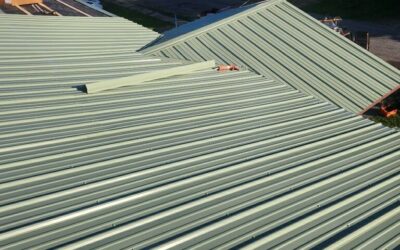How Much Attic Ventilation Do I Need? A Complete Guide by S&K Construction and Remodeling LLC
Proper attic ventilation is a crucial aspect of maintaining a healthy, energy-efficient home. Without adequate ventilation, your attic can become a breeding ground for moisture buildup, mold, and even structural damage. But how much attic ventilation do you actually need? The answer depends on several factors, including your roof size, climate, and ventilation system setup. In this guide, we’ll break down everything you need to know about attic ventilation to ensure your home stays protected year-round.
At S&K Construction and Remodeling LLC, we specialize in roofing and ventilation services across Northeast Ohio, including Youngstown, Cleveland, Medina, Willoughby, and more. Whether you’re installing a new roof or upgrading your attic ventilation, our team is here to help you determine the perfect balance for your home.
Why Is Attic Ventilation Important?
Attic ventilation plays a key role in maintaining the overall health of your roof and home. Here are some of the primary benefits of having proper attic ventilation:
- Prevents Moisture Buildup – Without proper ventilation, moisture from your home can become trapped in the attic, leading to mold growth and wood rot.
- Extends Roof Lifespan – Excess heat and moisture can damage your shingles and underlayment, leading to premature roof failure.
- Regulates Indoor Temperature – Proper airflow helps keep your attic from overheating in the summer, reducing the strain on your HVAC system.
- Prevents Ice Dams – In cold climates like Northeast Ohio, ventilation helps prevent ice dams from forming by regulating attic temperature and preventing snow from melting and refreezing at the roof’s edge.
The General Rule for Attic Ventilation
The industry standard for attic ventilation follows the 1:150 rule, meaning that for every 150 square feet of attic space, you need at least 1 square foot of net free vent area (NFVA). However, if you have a balanced ventilation system with both intake and exhaust vents, you can follow the 1:300 rule, which requires 1 square foot of NFVA per 300 square feet of attic space.
How to Calculate Your Attic Ventilation Needs
- Determine Your Attic Floor Area – Measure the length and width of your attic space and multiply them to get the square footage.
- Example: An attic that is 30 feet by 40 feet = 1,200 square feet.
- Apply the 1:300 Rule (for balanced systems):
- 1,200 sq. ft. ÷ 300 = 4 square feet of total ventilation needed.
- Convert to Square Inches:
- Since most vent sizes are measured in square inches, multiply by 144 (1 square foot = 144 square inches).
- 4 sq. ft. × 144 = 576 square inches of total ventilation needed.
- Divide Between Intake and Exhaust:
- Ideally, you want 50% intake (soffit vents) and 50% exhaust (ridge or gable vents).
- Intake = 288 square inches
- Exhaust = 288 square inches
Types of Attic Ventilation
There are two main types of attic ventilation: intake vents and exhaust vents.
Intake Vents (Bring Fresh Air In)
Intake vents allow cooler outside air to enter the attic and push out warm, moist air. Common types include:
- Soffit Vents – Installed under the eaves of your roof, soffit vents are the most common and effective intake vents.
- Gable Vents – Placed on the exterior walls near the peak of the attic, these vents allow cross-ventilation but are less effective than soffit vents in a balanced system.
Exhaust Vents (Push Stale Air Out)
Exhaust vents allow hot and moist air to escape, preventing overheating and moisture buildup. Popular types include:
- Ridge Vents – Installed along the peak of the roof, ridge vents provide continuous airflow and are often the best option.
- Box Vents (Static Vents) – Small, individual vents placed near the roof peak to allow hot air to escape.
- Powered Attic Fans – These fans actively remove hot air but should be used cautiously to avoid interfering with natural ventilation.
- Turbine Vents – Wind-powered vents that spin and create suction to remove hot air.
Signs That Your Attic Ventilation Needs Improvement
If your attic is not properly ventilated, you may experience several warning signs, including:
- Excessive Heat in the Attic – If your attic temperature is significantly higher than the outside air in summer, ventilation may be insufficient.
- Mold or Mildew Growth – Moisture buildup can lead to mold on wood surfaces and insulation.
- Ice Dams in Winter – Ice dams form when heat from an unventilated attic melts snow, which refreezes at the eaves.
- Peeling Paint or Stains on Ceilings – Poor ventilation can cause condensation, leading to water stains or peeling paint inside your home.
Best Practices for Installing Attic Ventilation
To achieve optimal attic ventilation, follow these best practices:
- Ensure Proper Balance – Keep intake and exhaust ventilation equal to promote steady airflow.
- Use High-Quality Vents – Investing in durable, rust-resistant vents will help ensure long-term performance.
- Avoid Mixing Ventilation Types – Stick with one exhaust vent type (ridge, box, or turbines) to prevent air short-circuiting.
- Seal Air Leaks – Prevent unwanted airflow from your living space into the attic by sealing gaps around pipes, chimneys, and attic access points.
How S&K Construction and Remodeling LLC Can Help
At S&K Construction and Remodeling LLC, we specialize in roofing and attic ventilation services to help homeowners in Northeast Ohio optimize their home’s airflow. Whether you need a new ventilation system, attic inspection, or roofing upgrades, we are here to provide expert solutions tailored to your home’s specific needs.
Areas We Serve:
- Youngstown
- Cleveland
- Medina
- Willoughby
- Chardon
- Twinsburg
- Lyndhurst
- Beachwood
- Euclid
- And surrounding areas!
Conclusion
Attic ventilation is a critical factor in protecting your home from moisture damage, energy inefficiency, and roofing issues. By following the industry standards and working with an experienced roofing contractor like S&K Construction and Remodeling LLC, you can ensure that your attic has the right amount of ventilation for long-term protection and efficiency.
If you’re unsure about your attic ventilation needs, contact us today for a professional attic inspection and customized ventilation solutions. Let’s work together to improve your home’s airflow and extend the life of your roof!
 (440) 307-2060
(440) 307-2060

